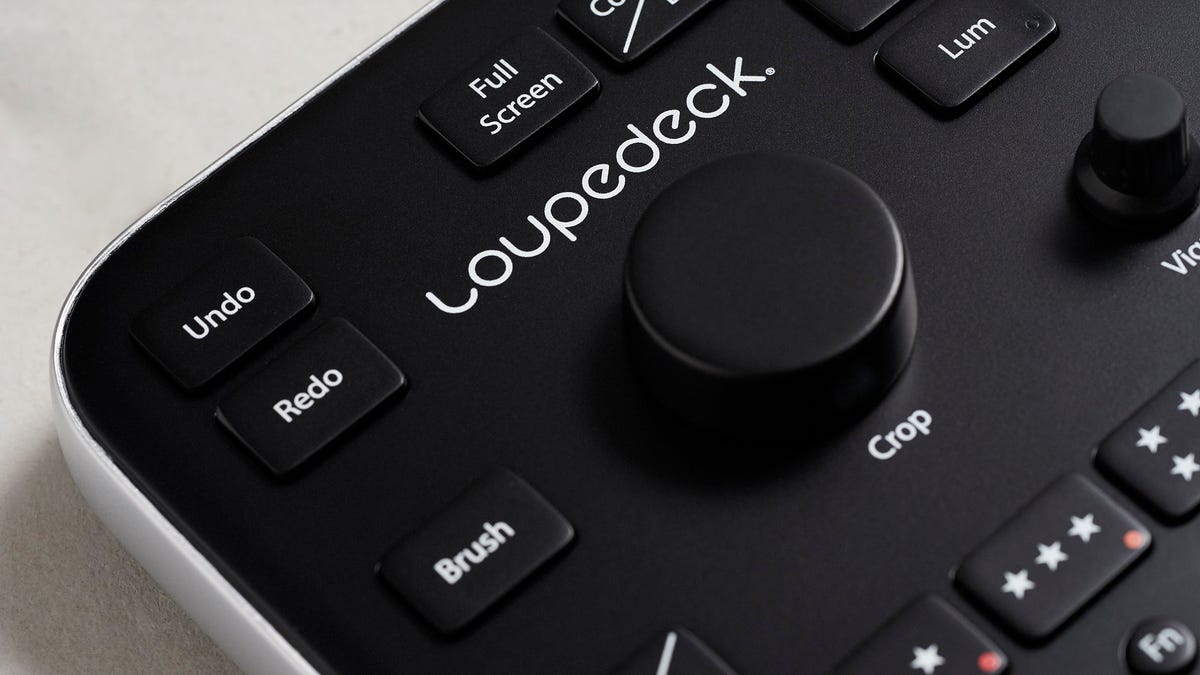Newly fashionable hardware controls aim to speed up Lightroom
Loupedeck's custom-built hardware replaces Adobe's on-screen sliders and toggles with real-world knobs and switches.
A group of former Nokia employees thinks it has a better way for you to edit photos: Loupedeck, a hardware console with sliders, knobs and switches dedicated to Adobe Systems ' Lightroom software.
Lightroom has a wide range of on-screen controls for photo-editing tasks like adjusting exposure, cropping, fiddling with color and applying a star rating. Your photo takes up most of your Windows or Mac screen, and you can reach all the editing sliders and input fields by scrolling up and down a narrow strip along the right edge of the screen.
A crowdfunded project called Loupedeck, though, aims to give photo enthusiasts and pros a more direct tool. It's a special-purpose USB-connected Lightroom console with knobs to change settings like shadow and contrast and eight sliders to control specific colors' saturation and brightness. Buttons are dedicated to navigating your photo library, copying and pasting editing settings and comparing before and after versions of photos.
The Loupedeck is a new example of a rethinking of how we should interact with computers.
For decades, we were OK with keyboards and mice, but touchscreens have started creeping into the mix. And this month, Microsoft introduced an adaptable knob called the Surface Dial and Apple swapped out its MacBook Pro's function keys with a programmable display called the Touch Bar. The Loupedeck vaults over keyboard shortcuts to offer something more akin to consoles DJs use to mix audio.
The Loupedeck is designed to speed up Lightroom photo editing with dedicated hardware controls.
"It allows any aspiring or established professional working with Adobe Lightroom to level-up their productivity and efficiency," said Chief Executive Mikko Kesti, a mechanical engineer and photographer who joined with several former Nokia employees to launch the company.
It's not the only example of a new hardware interface, though. A company called Palette offers a customizable array of buttons, knobs and sliders, with a basic kit costing $299.
The Loupedeck costs $249 or £205 for early buyers and is set to ship in June. The regular price will be $399 (£331), with a ship date of August 2017.
Better editing controls could be handy, but the Loupedeck involves some complications. It's not going to fit on your lap if you've already got a laptop perched on your knees when on the road. If you spend a lot of time adding captions, titles and keywords, you're going to have to switch back and forth with your regular keyboard. And if Adobe introduces new Lightroom editing controls, the Loupedeck hardware won't easily be able to change with them.
The company plans to write a Lightroom plug-in that handles communication with the software. And eventually it hopes to support other programs, too.
First published November 3, 1:29 p.m. PT.
Update, November 4, 3:02 p.m.: Adds comment from the manufacturer and a mention of the competing Palette tool.


